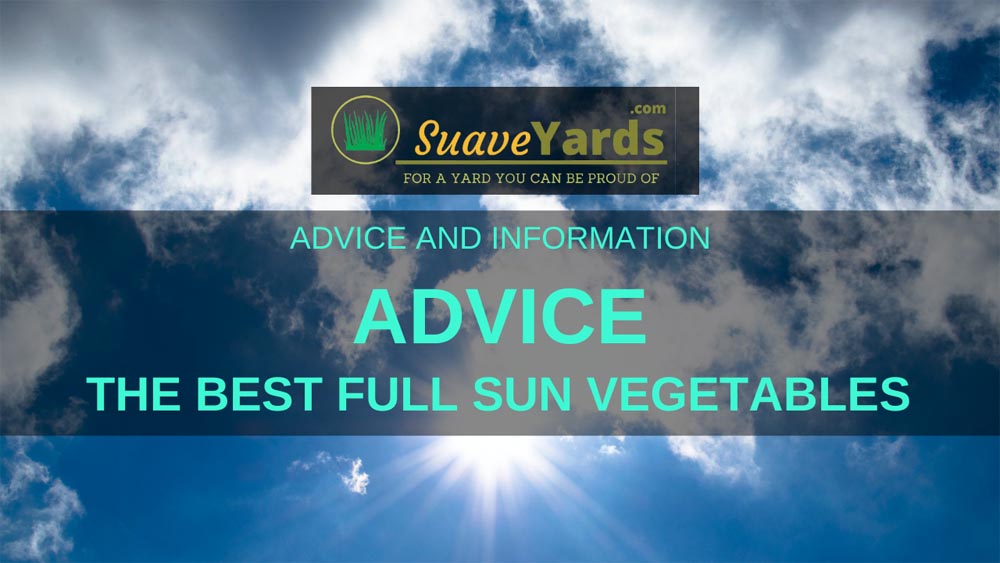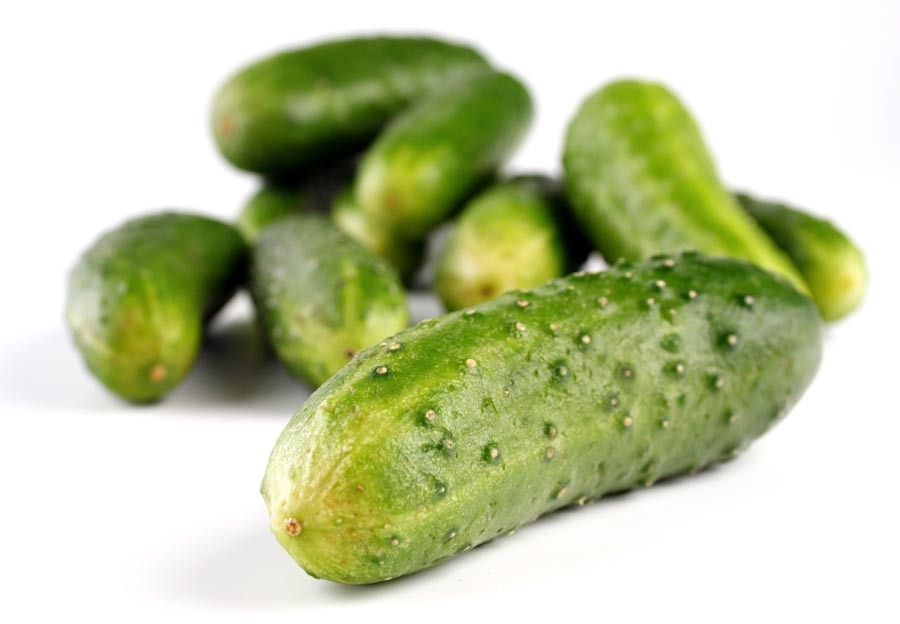
If you have a large open garden, you should plant vegetables that enjoy full sun. This way, you don’t have to worry about shade and you’re going to be self-sustaining.
Let’s consider the best full-sun vegetables to plant.

What are the Best Full-Sun Vegetables?
Corn, pepper, pumpkin, sweet potato and tomato are all delicious and versatile vegetables that thrive in full-sun climates. They require 8 to 10 hours of sunlight. Other popular full-sun vegetables are cucumber, eggplant, green beans, okra and zucchini.
What Are Full-Sun Vegetables?
This refers to vegetables that need six to eight hours of sun a day. Some vegetables even go as far as needing eight to 10 hours of sunlight.
Don’t plant these types of vegetables near large trees or any type of shade.
Look
Vegetables are important to our body. They provide vitamins and minerals that keep us healthy.
A lot of vegetables are delicious, too. Some vegetables may be divisive when it comes to taste, but no one can argue that they are not healthy.
However
Growing them the right way matters. If you have full-sun vegetables that you plant in the shade, chances are the growth will be slow.
What’s worse, you might not get the taste that you desire because the vegetables didn’t get enough sun.
That’s why
Always read the instructions on the label of your seeds, cuttings, or seedlings. The label should indicate care tips to optimize growth of the vegetable.
Also, different regions of the world have different climates and that really matters when it comes to garden maintenance.

There’s also this:
Soil is different in every area. There is soil type and pH level. These are also important components to growing a vegetable garden.
In this article, we will focus on the full-sun vegetables. We will give you a list of some of the vegetables that would need six to 10 hours of sunlight.
Best Full-Sun Vegetables
Included in the list are the most versatile and delicious vegetables that thrive best with maximum exposure to sunlight.
By the way, this list will include vegetables that are technically fruits. If they are used more in savory food rather than desserts, then that’s a vegetable in our book.
Here’s the list:

1. Corn
More often, we see corn grown in a field. You can absolutely plant them at home, too.
They should be planted when the weather is hot, so the thick of summer would be great. Then of course, it will need six to eight hours of sunlight.
What to do with a corn:
There’s a lot of ways to eat corn. You can grill it or boil it and eat it on a cob. Put some butter for great flavor.
You can also remove the kernels, cook them, and eat them as a side dish. They can also be added to different dishes.
They can also be made into corn flour, cornmeal, popcorn, and so much more.
Nutrients
This starchy vegetable is rich in fiber, which is good for digestion and prevents constipation. It contains vitamin B and minerals like copper, iron, magnesium, manganese, and zinc.
There are also various antioxidants in corn.

2. Cucumber
It is best to plant cucumber at least two weeks after the last frost. It is sensitive to frost and the taste would suffer. The plant can be damaged in the cold, too.
The soil should be at least 70℉ when planting cucumber.
What to do with cucumber:
This is one versatile crop. First, it’s commonly used to make a pickle, and the pickle has so many uses in the culinary world.
Then, the cucumber can also be made into a drink. Or you can eat it raw, or mix it in a salad. Cucumber soup is also a hearty food.
But that’s not all!
Cucumber can also be made into various beauty products. In fact, fresh cucumber could be used in your beauty regimen. You can slice it up and put a round slice on each of your eyes. It has a cooling effect and it could get rid of the puffiness.
Nutrients
There’s a lot of water in cucumber, which makes it great for hydration. But that’s not all, it also has fiber to avoid constipation.
Cucumber also contains magnesium, manganese, potassium, protein, and vitamins C and K.

3. Eggplant
It’s best to plant an eggplant when the soil is about 50℉ or warmer. It needs six to hours of sunlight and the soil should be moist.
Don’t prematurely harvest eggplants because it’s going to be bitter.
What to do with eggplants:
A lot, actually. Eggplants are really delicious. Eggplant parmesan is easily one of the most popular eggplant dishes out there.
Eggplant can also be fried, grilled or baked.
Nutrients
The eggplant is good for the heart because of the presence of fiber, potassium, and vitamins C and B6. It also contains a lot of antioxidants.
It also has fiber, which is great at lowering bad cholesterol levels.

4. Green beans
Beans need to be planted when there is no more frost. This is a plant that needs heat–between six and eight hours of sunlight is necessary.
They also prefer a more acidic soil.
What to do with beans:
The most basic recipe for green beans is to fry them in butter and top with parmesan cheese after. It’s a great side dish.
It can also be an ingredient in many soups and casseroles.
Nutrients
There is no cholesterol in green beans, so it’s a good alternative for people suffering from high cholesterol.
Green beans also contain protein, fiber, and vitamins A, B, C, E, and K.

5. Okra
This highly divisive plant is really quite easy to grow. It’s not very picky when it comes to soil, but it does need six to eight hours of sunlight.
It’s also best to grow okra directly to the ground when it’s already quite warm. Okra really loves the heat.
What to do with okra:
There are so many uses to okra. You can eat it fresh or you can fry it. You can also use it as an ingredient to soup.
The inside of the okra is quite sticky. Basically, you can also use okra as a thickener for gumbo and other stews.
Nutrients
This vegetable, also known as lady’s fingers, is rich in nutrients. It has fiber, magnesium and protein.
Okra is also loaded with vitamins: A, C, K, B6 and B9.

6. Pepper
There are so many different kinds of pepper, but they generally have the same growing characteristics.
The seeds are best sown after the last spring frost. While pepper generally loves the heat, it should be balanced with an inch or two of water every week. More water would be needed when the temperature is really hot.
What to do with pepper:
This is a great crop to provide flavor to food. It provides a delicious kick to any kind of dish.
Bell peppers can also be its own dish as in roasted peppers. They can also be used in salads or as pizza topping.
Nutrients
The pepper is low in calories yet loaded with a lot of good nutrients. There are various types of peppers but all are rich in fiber, folic acid, potassium, and vitamins A and C.
It also has capsaicin, which is known to boost metabolism. This means that it can be good for people trying to lose weight.

7. Pumpkin
The pumpkin is actually a cultivar of winter squash. And despite the name, winter squash actually favors the heat.
Pumpkins are actually quite sensitive to the cold. It grows best when seeds are sown when soil temperature is at 95℉.
What to do with pumpkin:
There’s the obvious, of course, you carve a face on it during Halloween. But Halloween season is just a week at best, there are actually quite a lot of culinary uses for pumpkin.
You can make a pumpkin puree, pumpkin pie, pumpkin soup, and so much more.

8. Sweet Potato
This is definitely a warm-loving crop. It can thrive even in poor soils, although the roots may not be well-developed when grown in clay or sandy soil.
Sweet potato is sensitive to frost, so you should plant it about a month after the last frost. It can mature between 90 and 170 days.
What to do with sweet potato:
Just like it’s more famous cousin, the potato, a sweet potato can also be made into fries and chips.
You can also boil, bake or roast sweet potatoes. They are very filling, too.
Nutrients
Sweet potato has antioxidants, fiber, manganese, potassium, and vitamins B6 and C.
Moreover, it has cancer-fighting properties. It is also known to be good for your vision and even enhances brain function.

9. Tomato
This is definitely one of the most famous vegetables around. It can be planted in late spring or early summer.
Don’t plant it near any shade because tomatoes need full sun to be as juicy and delicious as tomatoes should be.
What to do with tomato
There’s a lot you can do with tomatoes. You can puree them and it can be made into a juice or a tomato sauce.
It can be a pizza topping or a sandwich ingredient. It’s an important ingredient in a salad and it can provide sweetness and tanginess to any dish.
You can also eat tomatoes fresh from the garden.
Nutrients
Tomato is rich in lycopene, which is an antioxidant that is good for the heart while also lowering the risk of some types of cancer. There are other antioxidants present in the tomato like beta carotene, which is converted into vitamin A.
Other vitamins in tomatoes are C, B9, and K1. They are also rich in potassium.

10. Zucchini
Like all the vegetables in this list, zucchini needs full sun. Moreover soil should always be moist and high in organic matter.
This zucchini plant also needs to be fertilized often.
What to do with zucchini
This crop can be eaten raw but it’s not as sweet as the cucumber. Zucchini can be sauteed or baked, and it can also be used as in soups and stews.
You can also make a zucchini patty or the healthy zucchini noodles.
Nutrients
This crop is rich in nutrients: copper, fiber, manganese, phosphorus, and vitamins A, B, C and K.
It is also high in antioxidants and good for healthy digestion.
Summary
If you live in a warm-weather region, then you should plant full-sun crops. These are plants that would need six to eight hours of sunlight a day.
This is a list of the best full-sun vegetables that you could grow at home. Some of the crops on the list are botanically considered fruits but they are used as vegetables in the culinary world.
Knowing how to grow and care for the plants is necessary to have healthy and delicious produce.
Useful Resources
- What Does Full Sun or Partial Shade Mean? – The Spruce
- Full Sun Plants: Plants and Flowers that Do Well in Direct Sunlight – Gardening Know How
- Corn 101: Nutrition Facts and Health Benefits – Healthline

